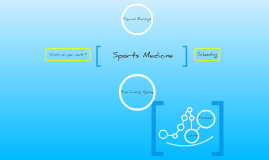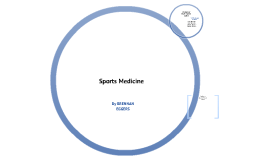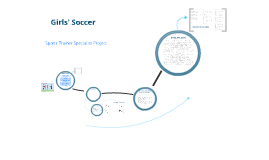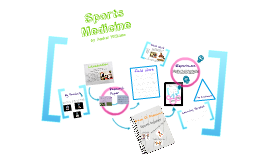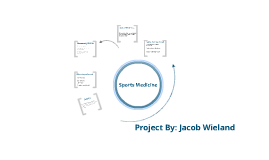Sports medicine
Transcript: •Girls are more prone to heat illness and concussions. •More likely to tear a ligament on their supporting leg whereas boys are more prone to injure their dominant leg. •Most injuries occur in competition rather than in practice. •Twice as many injuries occur in the second half because that’s when fatigue sets in. •For younger soccer players injuries are rare because the game is slower and less intense (12 and under) •Girls tend to hurt their knees more while boys tend to hurt their ankles more. •Studies have found that adolescent girls are four times more likely to tear their anterior cruciate ligament, found in the back of the knee. Scientists are not sure why this is but they believe that estrogen makes girls’ ligaments looser and lower levels of testosterone make it harder for girls to build muscle. •Because girls’ muscles are different in size and proportions compared to boys girls tend to stay more erect when they land, which absorbs less shock and can use their knee to buckle. •Researchers aren’t sure why girls are more likely to suffer from a concussion but theorize that it’s because girls’ neck muscles aren’t as strong or because they are more likely to report injuries. Most concussions are caused by collision with another player not from heading the ball. •To prevent injuries teams should stretch and warm up at the beginning of every practice and game. Coaches and trainers are advised to emphasize correct posture, straight up and down jumps, minimal side to side movements and soft landings. Research has shown that proper training and conditioning can reduce the risk of ACL injury often by 30%. • Proper conditioning: Building up hamstrings and inner quadriceps muscles. • Proper stretching, Warm ups, and cool downs: stretch groin, hip, hamstrings, Achilles tendon, and quadriceps can reduce the risk of strains and sprains. • Maintaining the field: check for holes, puddles, broken glass, stones, or other debris. • Wearing proper shin guards. • Wear mouth guards. What are the objectives of “Warming up”? •Decrease the risk of injuries •Increase the players agility, performance, power and skill •Gives the players time to focus and concentrate before the game/ practice Muscles tend to be cool and rigid, so if you do not allow them to warm up properly you increase your chance of injury, because if you twist or turn on the muscle it may be too much for the muscle to handle. Which can cause a strain, sprain or muscle tear. Start with: Light aerobic exercise - * Avoid sudden twisting and turning for now * jogging, skipping, side stepping Light stretches- Focus on the major muscle groups, like the groin, hamstrings, quads and calves 1. Dynamic stretches: Circles with arms, clockwise and counterclockwise Turn side-to-side from the waist Loosen shoulders Circles with the wrist, head 2. Static stretches: Flexibility and motor skills Quad stretch – stand on one foot, grab the ankle with your hand and pull into your backside Stretch upper body + arms – squat stance and stretch arms and upper body from left to right ** Body should be completely warmed up by now and each stretch should be held for about 20-30 seconds and repeated twice! ** 3. By this point the players should be pretty warmed up. ( 5 min before the game ) You can start to incorporate more soccer specific drills. You want to make them more demanding and increasingly harder but you do not want to tire them out before the game! Dribbling, passing, striking, touch and play Group drill: Team into a huge circle, standing arms length apart from each other Place a cone in the middle of the circle Have players jog to the cane and back out to the edge of the circle together * Instead of jogging , they can also do high knees, heel flicks, lunges and side stepping too * Very key to a soccer players progression! It is meant to reduce heart rate and stretch muscles to remove lactic acid build-up. Rehydration is a very KEY step! It can take just as long as the warm up and is as essential as the warm up. It allows the muscles to stretch and relax to avoid too much soreness and allows them to recuperate. This step also allows for R.I.C.E to occur if there are any issues that are brought up/ soreness/swelling Stretches are the same, but it’s best to start from the bottom and work your way up the body. It can start off with a light jog that slows down into a walk Some examples of stretches are: Hamstring Split Stretch 1. Bending on one knee, extend the other leg out in front of you. 2. Reach with both hands towards your outstretched foot. 3. Keep your toes towards the sky and tuck your head to increase the stretch. Remember to breathe! 4. Repeat for the opposite side. Chest & Back Stretch 1. This stretch can be performed kneeling or standing. Take your boots off if you kneel. 2. Clasp your hands behind your back, keeping your arms as straight as possible. 3. Try to straighten your arms and raise them. 4. From this position bend forward from the waist also tucking your








